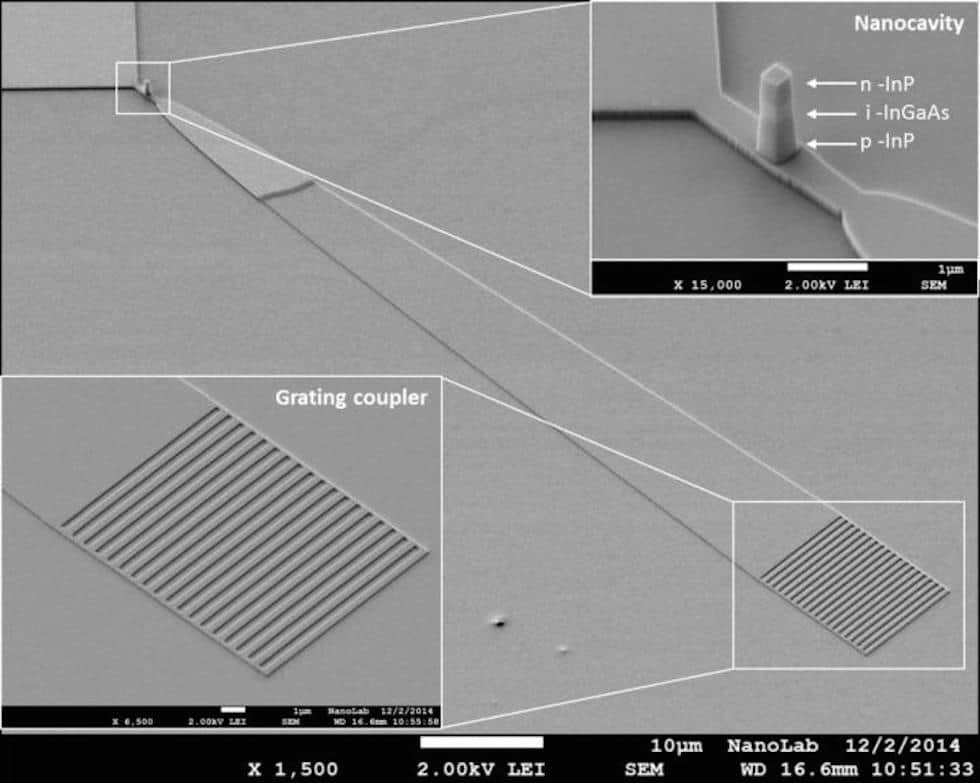
Interconnects both within and between microchips are increasingly seen as a major bottleneck in the growth of data traffic, and whilst optical (or photonic) interconnects are widely seen as a potential solution researchers have been unable to create a light source that is small enough to fit into the microscopic structure of a microchips, and efficient enough to represent a credible solution.
Scientists at Eindhoven University of Technology believe that its LED - which is 1000 times more efficient than its predecessors, and is capable of handling gigabits per second data speeds, could be the solution that industry has been looking for.
According to a paper published in the journal Nature Communications, one of the group's key innovations is its work on integrating the light source with a light channel or waveguide for transporting the light signal.
Another key characteristic of the new nano-LED is that it is integrated into a silicon substrate on a membrane of indium phosphide. Silicon is the basic material for microchips but is not suitable for light sources whereas indium phosphide is. Furthermore, tests reveal that the new element converts electrical signals rapidly into optical signals and can handle data speeds of several gigabits per second.




Glasgow trial explores AR cues for autonomous road safety
They've ploughed into a few vulnerable road users in the past. Making that less likely will make it spectacularly easy to stop the traffic for...